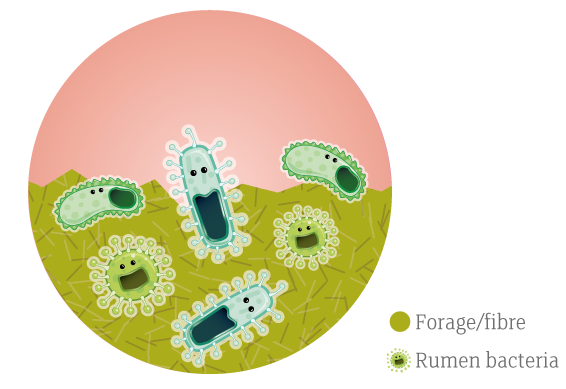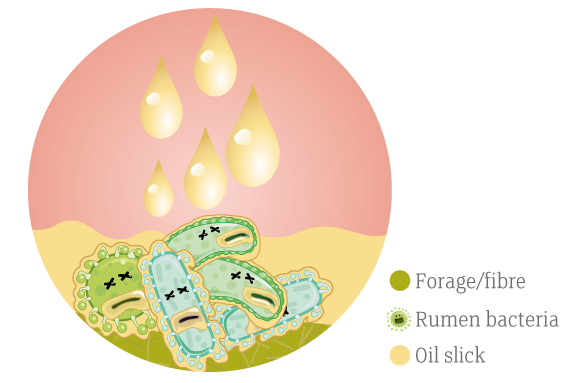Rumen-unprotected (rumen-active) fats
In the 'normal' rumen, bacteria digest fibre to release nutrients (Figure 1). However, addition of rumen-active fats to the diet can lead to undesirable effects in the rumen which reduce animal performance (Figure 2). The major issues caused by adding rumen-active (unprotected) fats and oils to rations can be summarised as follows:
Oil slick
The oil released in the rumen effectively creates an oil ‘slick’ which physically coats fibre particles preventing rumen bacteria from breaking it down, hence decreasing fibre digestion.
Toxic to rumen bacteria
Many of the individual fatty acids, particularly the more highly unsaturated fatty acids, are toxic to some species of rumen bacteria. Bacteria ferment feed in the rumen, so if there are fewer bacteria, this will reduce fibre digestion, rumen function and feed efficiency.
Trans fats
Unsaturated fatty acids provide the raw materials for production of particular trans fatty acids which are very potent at reducing milk fat %.
Minerals
Fatty acids can bind minerals such as calcium and magnesium in the rumen, reducing their availability for bacterial growth and rumen function (muscle contraction).

